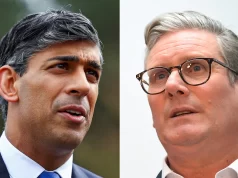The report comes after a sex scandal in Westminster, during which Prime Minister Theresa May sacked her de facto deputy, Damian Green, after he made “misleading” statements about allegations that police found pornography on computers in his parliamentary office in 2008. The data, released after a freedom of information (FoI) request, shows a spike in September in the number of attempts to visit the sites, with 9,467 requests from both the Houses of Lords and Commons that month.
Parliamentary authorities said a majority of the attempts were not deliberate. The figures also showed a sharp decrease in the number of attempts to access pornographic websites in recent years.
In 2016, the parliamentary filtering system blocked 113,208 attempts, down from 213,020 the previous year. Figures for January and February 2017 could not be provided by the parliamentary authorities due to changes in technology and the way the data was held, the Guardian reported.However, the available data showed there were 30,876 attempts from March to October. During this period, parliament was dissolved from late April to early June ahead of the general election on June 8, and MPs were away during the summer recess from the end of July to early September.
In 2016, the parliamentary filtering system blocked 113,208 attempts, down from 213,020 the previous year. Figures for January and February 2017 could not be provided by the parliamentary authorities due to changes in technology and the way the data was held, the Guardian reported.However, the available data showed there were 30,876 attempts from March to October. During this period, parliament was dissolved from late April to early June ahead of the general election on June 8, and MPs were away during the summer recess from the end of July to early September.








